|
|
The dramatic price decline of most commodities over the last five weeks brought some analysts to call for the end of the bull market in commodities; their conclusion is that commodities have reached a turning point and a bigger price decline awaits us. Are they right? Let's see how commodities have done this year.
In the table below, the main commodities are arranged by group and last price; the price at the end of 2007 and the maximum price of each commodity in the year 2008 are also given. In addition, the price change from 2008 maximum value and the price change from the beginning of the year are calculated.
click to enlarge images
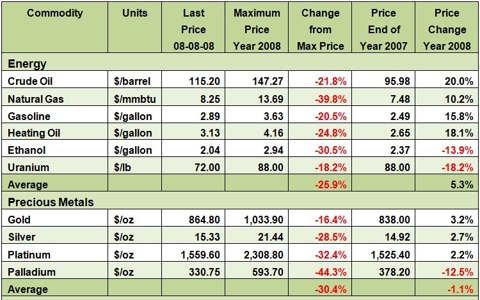
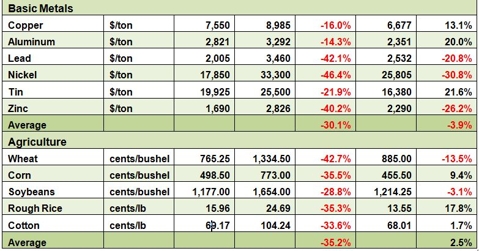
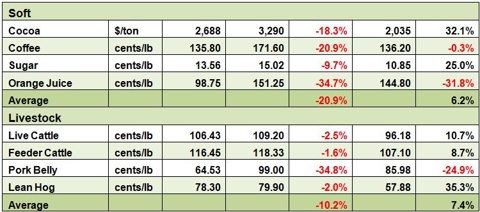
From the table above, we can see that after a very sharp rise this year, which caused strong protest all over the world, most commodities have, on average, almost returned to their price at the beginning of the year.
Price change of main commodities from the beginning of the year
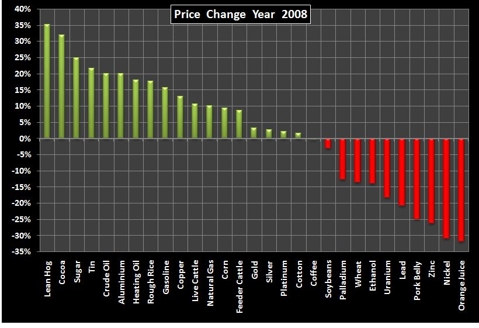
Price decline of main commodities from their maximum value in the year 2008
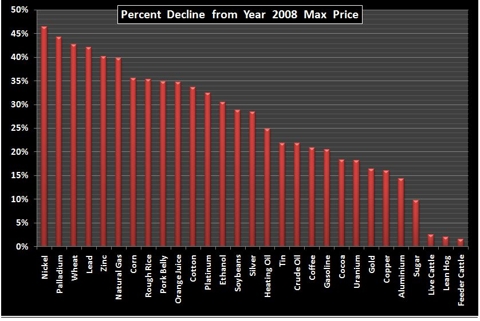
Many analysts explain the recent sharp decline in the price of commodities by the strengthening of the dollar, because the price of commodities is denominated in dollars. Naturally, the dollar and commodities move in opposite directions, but that cannot explain such a big decline in the price of commodities, since the dollar has risen only by 6.44% from its lowest value of all time against the euro - 1.60 on July 15th 2008 - and commodities have shown a much bigger move - a decline of 26% on average.
In our opinion, the recent fall of commodity prices is not due to a change in the basic fundamentals of supply and demand, but rather to a shift in the sentiment of investors. The fact that the US economy is slowing was known also in the first half of the year; nevertheless, commodity prices rose sharply during this period. It seems that after enjoying huge gains in the commodity markets, fund managers and other investors have closed their positions, and even went short after reaching the conclusion that "the party is over".
According to Jim Rogers, the famous commodities guru, commodity prices move in cycles of about 18 years, and since the current bull market started at 2002, he expects it to last until about 2020. Rogers explains the cyclic nature of the commodities market by the fact that when the demand for commodities and prices are low, no one is willing to invest in new mines, start oil explorations or increase cultivation areas. However, when shortage is felt and prices are moving up, that is when companies start looking to increase production; but it takes years to begin a new exploration or develop new mines, so that the supply shortage which is accompanied by high prices can last for a long time. If we accept his theory, the recent decline in commodity prices should now give us an opportunity to enter this market at the right time.
In view of the basic fundamentals of supply and demand, the market is still very tight, inventories of agriculture products are historically low, the oil supply has stayed almost the same, and the mine supply of precious metals from South Africa is dropping because of a shortage in the electricity supply. All this brings us to the conclusion that the recent decline in commodity prices is a healthy correction to the commodity bull market that is still going on. |
|